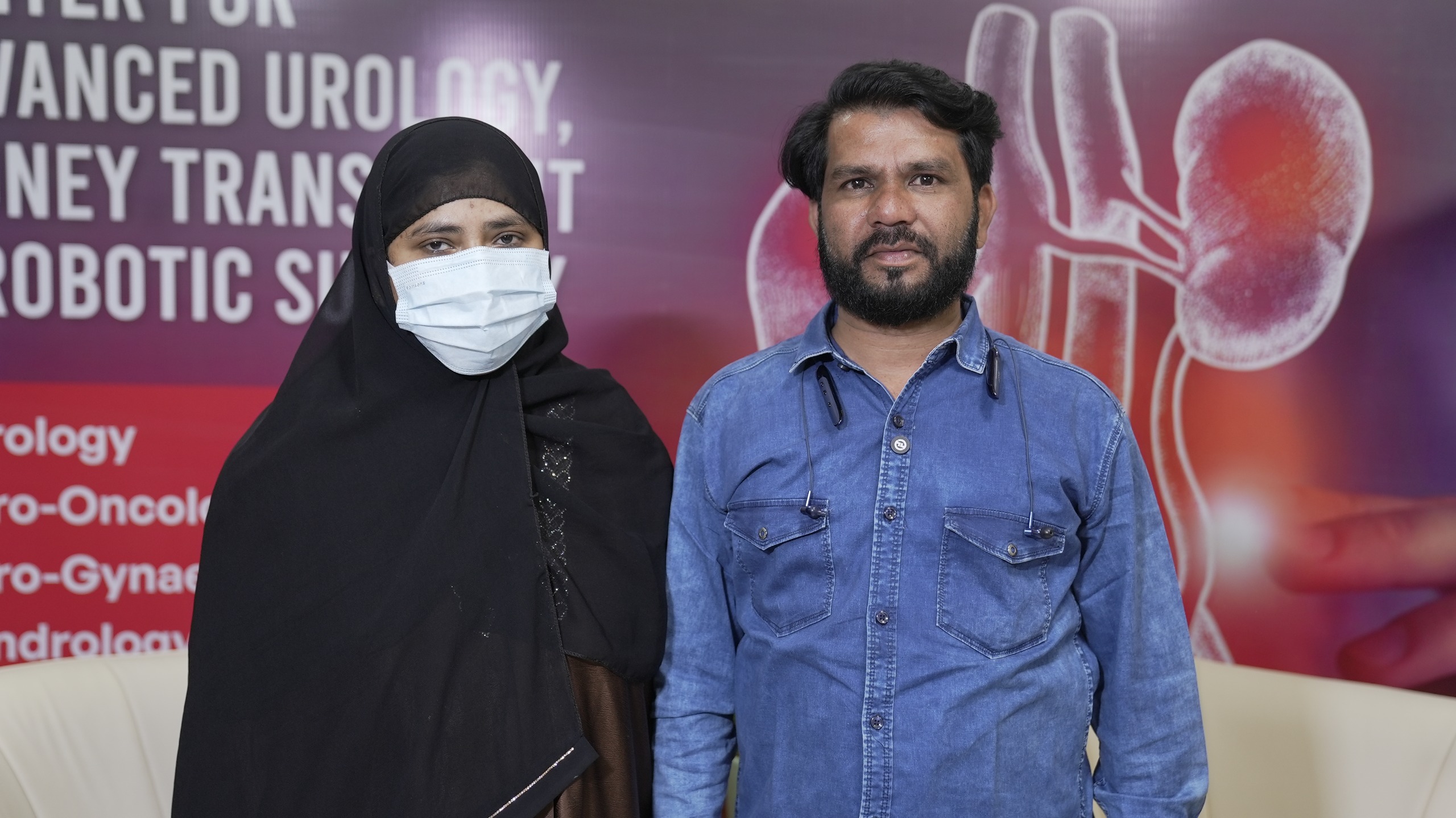The TREAT programme, conducted on both the kidney donor and recipient using separate robotic systems, enhances surgical precision, reducing tissue trauma and speeding up recovery.
Published Jul 01, 2025 | 8:15 AM ⚊ Updated Jul 01, 2025 | 8:15 AM

Sana, who was operated upon using the TREAT procedure.
Synopsis: Fortis Hospital Bannerghatta Road in Bengaluru successfully performed India’s first-of-its-kind initiative, where simultaneous robotic surgeries are conducted on both the kidney donor and recipient using separate robotic systems.
Sana (35), a resident of Bijapur in Karnataka, had been battling end-stage kidney failure for over two years. “She was on dialysis two to three times a week,” her husband said. “So we decided a transplant would be a better option.”
“There were a lot of problems with dialysis — personally and within the family,” Sana explained. “I had to sit for four hours each time, three days a week, and I would feel extremely tired the whole day. I couldn’t do any work.”
Her husband added, “We searched all over the country — Kolkata, Mumbai, Hyderabad — for treatment, but we got turned down everywhere because of the seriousness of the issue.”
Eventually, the couple came across the TREAT (Total Robot Enabled and Assisted Transplant) programme of Fortis Hospital Bannerghatta Road in Bengaluru.
According to Fortis Hospital, the TREAT programme is India’s first-of-its-kind initiative where simultaneous robotic surgeries are conducted on both the kidney donor and recipient using separate robotic systems — enhancing surgical precision, reducing tissue trauma, and speeding up recovery.
What sets it apart further is its holistic approach: It extends equal focus to donor care and rehabilitation, while also making transplantation accessible for recipients with complex medical conditions such as obesity or previous transplant history. According to the hospital, the programme is designed to minimise discomfort, reduce hospital stays, and enable quicker return to normal life.
“When we first heard of this robot surgery, we thought robots would do the surgery,” Sana’s husband said, laughing. “But later we found out the surgeons perform it using robotic assistance.”
However, there was another problem: They couldn’t find a suitable donor match. “We tried so many samples — several family members and even outside — but nothing matched,” her husband said. “We hadn’t even asked her brother, Chand. But he came forward and offered. We’re so grateful.”
“My brother saw my condition and stepped forward to help me, even though he has leg problems of his own. He didn’t hesitate,” Sana said. “And the organ turned out to be a perfect match.”
Chand and Sana had what’s called a ‘6 out of 6’ HLA (human leukocyte antigen) match — all six human leukocyte antigens aligned — which is extremely rare and ideal for transplant success.
“Our family is business-based, and we all live together in our village,” Sana said. “Since childhood, my relationship with my big brother has been extremely warm. But we never imagined a day would come when he’d give me his kidney. It changed everything. I’m so grateful.”
“He just came to us and said, ‘Why are you going to so much trouble? I’m here. Let me help.’ We didn’t even have to ask him,” her husband added. “We’re thankful beyond words.” Both siblings underwent surgery on the same day using the dual robotic system.
Sana’s kidney began functioning within days, and both she and her brother recovered well within a week. “There was minimal scarring and no pain afterwards,” Sana said. “So when I wear a saree and blouse, the scar isn’t visible at all.”
Fortis Hospital Reanal Services Principal Director Dr Mohan Keshavamurthy said, “With minimal scarring and maximum precision, it restores body image, preserves dignity, and empowers families through a safer, faster, and more compassionate transplant journey.”
(Edited by Muhammed Fazil.)
